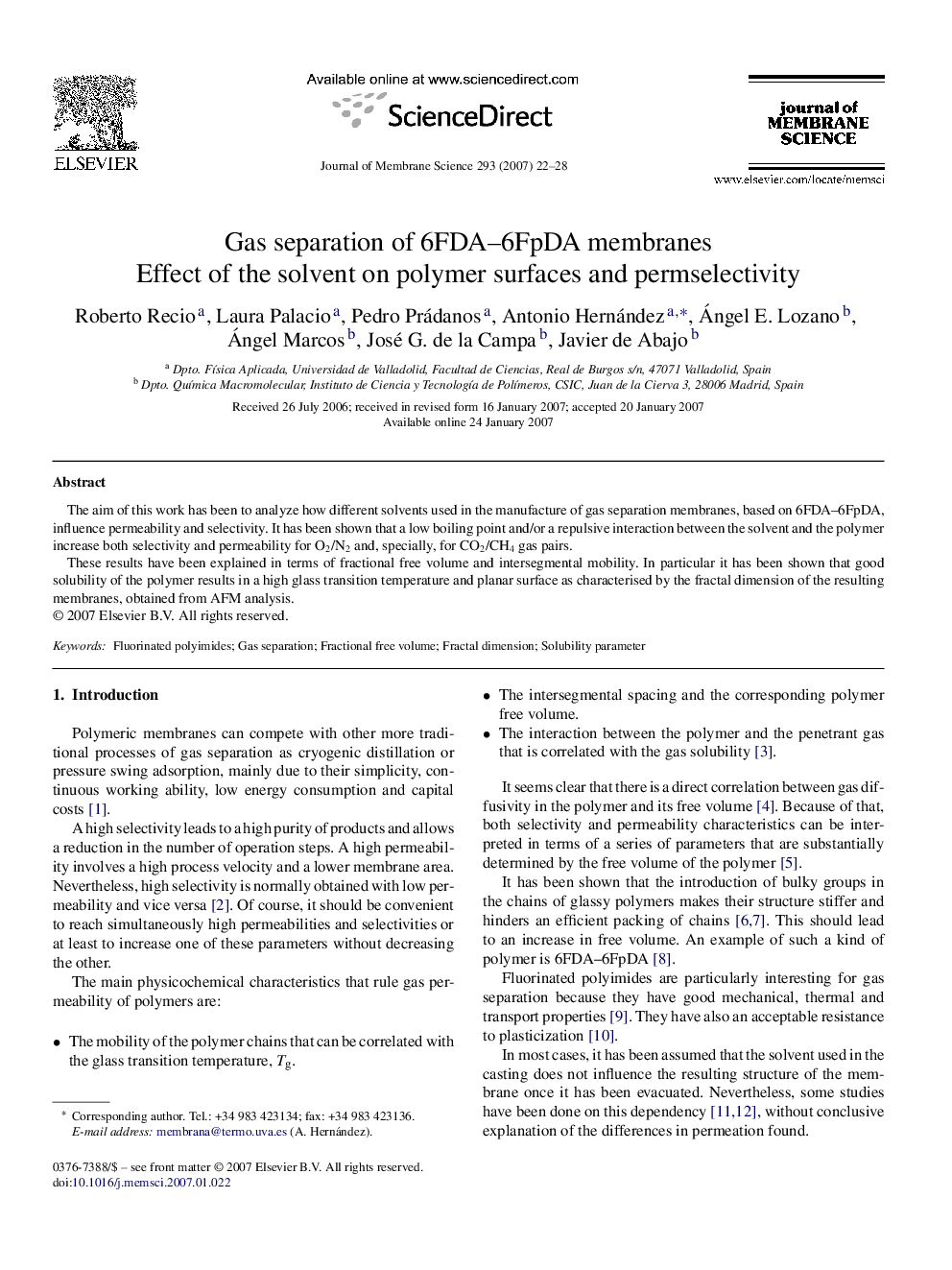| Article ID | Journal | Published Year | Pages | File Type |
|---|---|---|---|---|
| 638567 | Journal of Membrane Science | 2007 | 7 Pages |
Abstract
The aim of this work has been to analyze how different solvents used in the manufacture of gas separation membranes, based on 6FDA–6FpDA, influence permeability and selectivity. It has been shown that a low boiling point and/or a repulsive interaction between the solvent and the polymer increase both selectivity and permeability for O2/N2 and, specially, for CO2/CH4 gas pairs.These results have been explained in terms of fractional free volume and intersegmental mobility. In particular it has been shown that good solubility of the polymer results in a high glass transition temperature and planar surface as characterised by the fractal dimension of the resulting membranes, obtained from AFM analysis.
Keywords
Related Topics
Physical Sciences and Engineering
Chemical Engineering
Filtration and Separation
Authors
Roberto Recio, Laura Palacio, Pedro Prádanos, Antonio Hernández, Ángel E. Lozano, Ángel Marcos, José G. de la Campa, Javier de Abajo,
